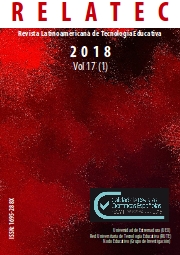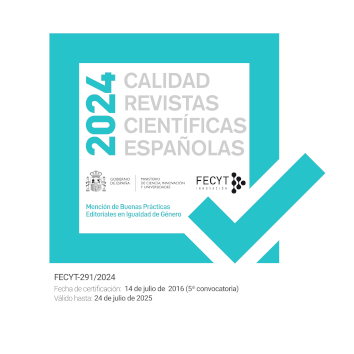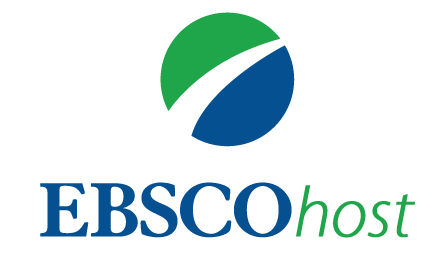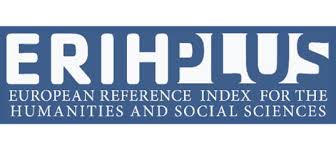Impact of videogames on reading fluency in children with and without dyslexia. The case of Minecraft
DOI:
https://doi.org/10.17398/1695-288X.17.1.77Keywords:
Videogames, Reading fluency, Dyslexia, Minecraft, Case studyAbstract
Reading fluency is a critical skill for the effective processing of meaning and for reading comprehension. Reading comprehension is essential for learning and communicating. This ability can be affected during the literacy process, especially in children with dyslexic characteristics, generating difficulties while learning to read and write. Currently there are few studies in Spanish concerning the impact of ICT, mainly videogames on reading fluency in regular or children with difficulties initiating literacy. This research analyzed the effects of the videogame Minecraft on reading fluency in children with and without dyslexia. A pretest, learning and posttest design was used in a case study consisting of five children, between six and eight years old. Three of them presented characteristics of dyslexia. Participants were evaluated in reading and writing according to their academic grades and with instruments to acknowledge their initial and final levels in the reading of words included in the game. The activities involved the reading and writing of new words with controlled difficulty and with a time limit, as well as guided construction during the game. Results show that the given scaffolding and the virtual manipulation experience provided by Minecraft generated advances in the reading and fluency levels of all the participants as well as the acquisition of new vocabulary.hension, Second language instruction, Multimedia instruction, Adult Education, Educational innovation, Mixed methods research, Listening comprehension test.
Downloads
References
Blaesius, N., y Fleck, S. (2015). Quinze minutes de jeu vidéo : apports pour la prise en charge de la dyslexie. In 27ème confèrence francophone sur l’Interaction Homme-Machine (p. w9). Toulouse.
Condemarin, M., y Blomquist, M. (1970). La dislexia; manual de lectura correctiva. Chile: Editorial Universitaria.
Ekaputra, G., Lim, C., y Eng, K. I. (2013). Minecraft: A Game as an Education and Scientific Learning Tool. In Information Systems International Conference (pp. 239–242).
Evaristo, I., Navarro, R., Vega, V., y Nakano, T. (2016). Uso de un videojuego educativo como herramienta para aprender historia del Perú The use of a video game as an educational tool to learn the history of Peru. RIED. Revista Iboeroamericana de Educación a Distancia, 19(2), 35–52. https://doi.org/10.5944/ried.19.2.15569
Granic, I., Lobel, A., y Engels, R. C. M. E. (2014). The benefits of playing video games. American Psychologist, 69(1), 66–78. https://doi.org/10.1037/a0034857
Hultstrand, A. (2015). Minecraft in the Math classroom. Methods, Benefits, and Difficulties of Minecraft Integration. (tesis de licenciatura) Liberty University, Virginia, USA.
Kervin, L. (2016). Powerful and playful literacy learning with digital technologies: EBSCOhost. Australian Journal of Language y Literacy., 39(1), 64–73. Recuperado a partir de http://ro.uow.edu.au/cgi/viewcontent.cgi?article=3882&context=sspapers
Jiménez-Porta, A. y Diez-Martínez, E. (2016). Dyslexia: analysis of technological resources (mobile applications, pc applications, websites) in Mexican Spanish to support its therapeutic in basic education. INTED 2016, 10th annual International Technology, Education and Development Conference, INTED 2016 Proceedings,pp.5297-5305, Valencia, Spain.
Jiménez-Porta, A., y Diez-Martinez, E. (2018)Análisis del contenido de apps y videojuegos: implicaciones en procesos cognitivos en la lectura inicial. Apertura, 10(1), 71–87. https://doi.org/http://dx.doi.org/10.18381/Ap.v10n1.1114
Kuhn, D. (1995). Microgenetic study of change: What Has It Told Us? Psychological Science, 6(3), 133–139. https://doi.org/10.1111/j.1467-9280.1995.tb00322.x
Labat, H., Ecalle, J., Baldy, R., y Magnan, A. (2014). How can low-skilled 5-year-old children benefit from multisensory training on the acquisition of the alphabetic principle? Learning and Individual Differences, 29, 106–113. https://doi.org/10.1016/j.lindif.2013.09.016
Marín Díaz, V., y Martín-Párraga, J. (2014). ¿Podemos utilizar los videojuegos para el desarrollo del currículo de la etapa de infantil? Journal of New Approaches in Educational Research, 3(1), 21–27. https://doi.org/10.7821/naer.3.1.20-25
Morek, M. (2014). Constructing social and communicative worlds - The role of peer-interactions in preadolescents’ discursive development. Learning, Culture and Social Interaction, 3(2), 121–133. https://doi.org/10.1016/j.lcsi.2014.02.005
Morgan, M. L. (2015). Developing 21st century skills through gameplay: to what extent are young people who play the online computer game Minecraft acquiring and developing media literacy and the four Cs skills? (tesis doctoral) New England College, New Hampshire, USA.
Nebel, S., Schneider, S., y Rey, G. D. (2016). Mining Learning and Crafting Scientific Experiments : A Literature Review on the Use of Minecraft in Education and Research. Educational Technology y Society, 19(2), 355–366.
Nuñez, M., y Del Moral, C. (2010). Competencia Léxica Y Competencia Comunicativa : Bases Para El Diseño De Programas didácticos en la educación escolar. Lenguaje Y Textos, (23), 91–97. Recuperado a partir de http://www.lecturayvida.fahce.unlp.edu.ar/numeros/a3n1/03_01_Condemarin.pdf
Sahagún, C., Ramírez, S., y Monroy, F. (2016). Integración de tabletas digitales como herramienta mediadora en procesos de aprendizaje. Apertura, 8(2), 70–83. https://doi.org/10.18381/Ap.v8n2.880
Serrano, F., y Defior, S. (2004). Dislexia en Español : estado de la cuestión. Electronic Journal of Research in Educational Psychology, 2(2), 13–34.
Sharp, L. (2017). The Geology of Minecraft. Teachingscience, 68(1), 14–18.
Short, D. (2012). Teaching scientific concepts using a virtual world - Minecraft. Teaching Science: The Journal of the Australian Science Teachers Association, 58(3), 55–58. Recuperado a partir de http://search.ebscohost.com/login.aspx?direct=true&db=ehh&AN=83256656&site=ehost-live
Snow, C., Porche, M., Tabors, P., y Ross, S. (2007). Is Literacy Enough? Pathways to Academic Success for Adolescents. Baltimore: Paul H. Brookes Publishing Co.
Swartz, S. (2010). Cada niño un lector. Estrategias innovadoras para enseñar a leer y escribir (1a. Edició). Chile: Salesianos Impresores S. A.
Tyler, P., O´Donnell, K., DeWitt, N., Bardzell, S., y Bardzell, J. (2013). From Organizational to Community Creativity: Paragon Leadership y Creativity Stories at Etsy. In Collaboration in Creative Communities (pp. 1023–1033). https://doi.org/10.1145/2441776.2441892
Downloads
Published
Issue
Section
License
Authors who publish in this journal accept the following conditions:
1. The Author retains copyright in the article. Upon acceptance of the article, the author shall grant to the Publisher the right of first publication of the article. with the dcoument registered with the Creative Commons Attribution-NonCommercial-NoDerivative 4.0 International (CC BY-NC-ND) license, which allows to third parties to use what is published whenever they mention the authorship of the work and the first publication in this journal.
2. Authors can make other independent and additional contractual agreements for the non-exclusive distribution of the article published in this journal (eg, include it in an institutional repository or publish it in a book) provided they clearly indicate that the work was published for the first time in this journal.
3. Authors are allowed and recommended to publish their work on the Internet (for example on institutional or personal pages) before and during the review and publication process, as it can lead to productive exchanges and a greater and faster diffusion of published work (see The Effect of Open Access).









